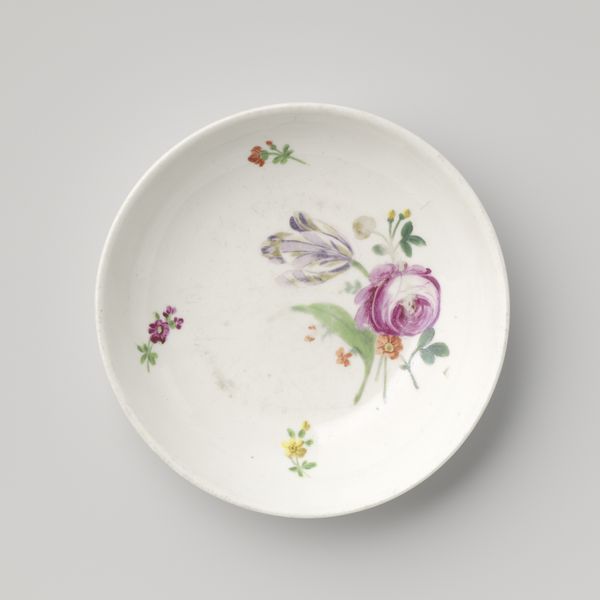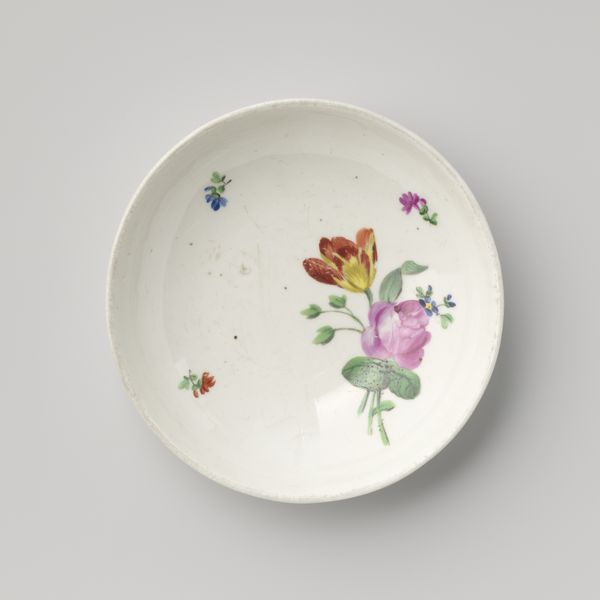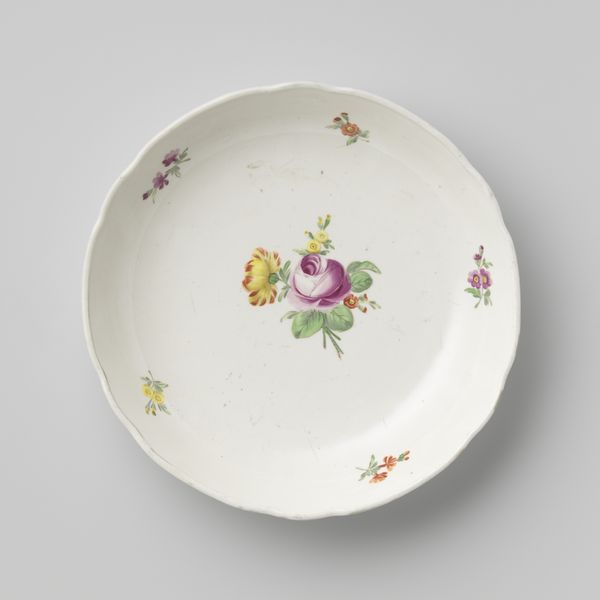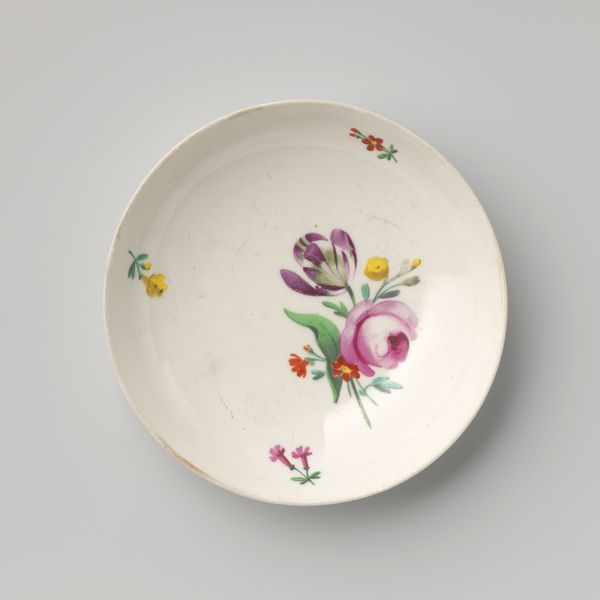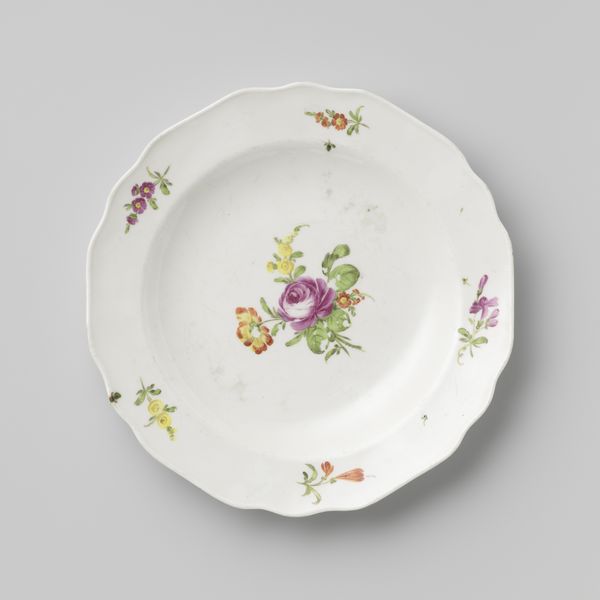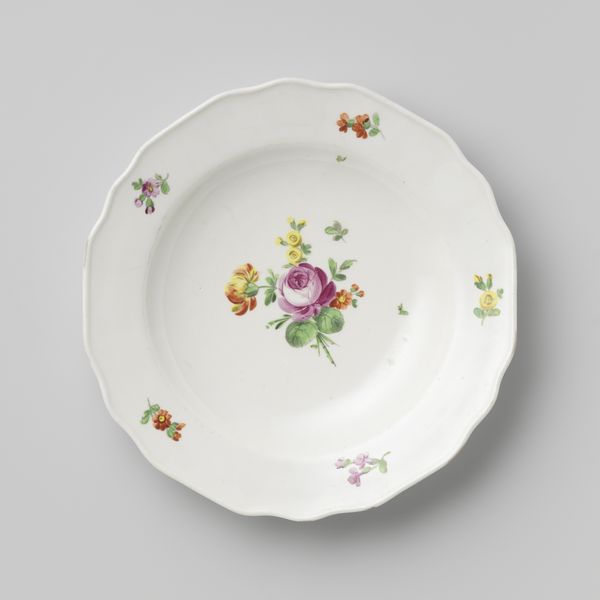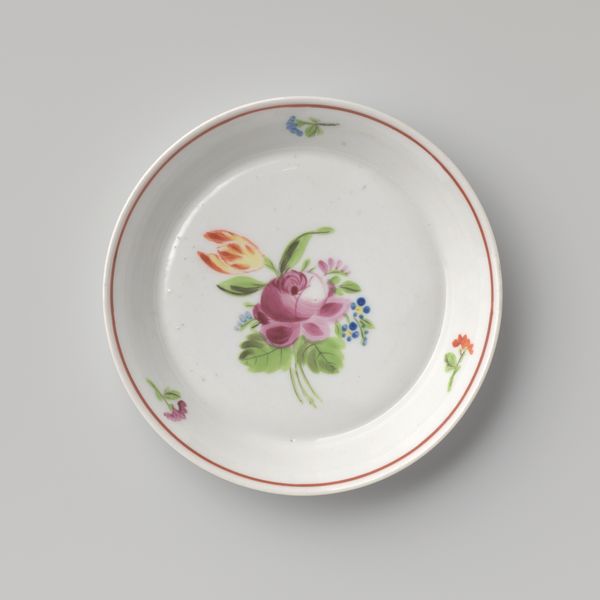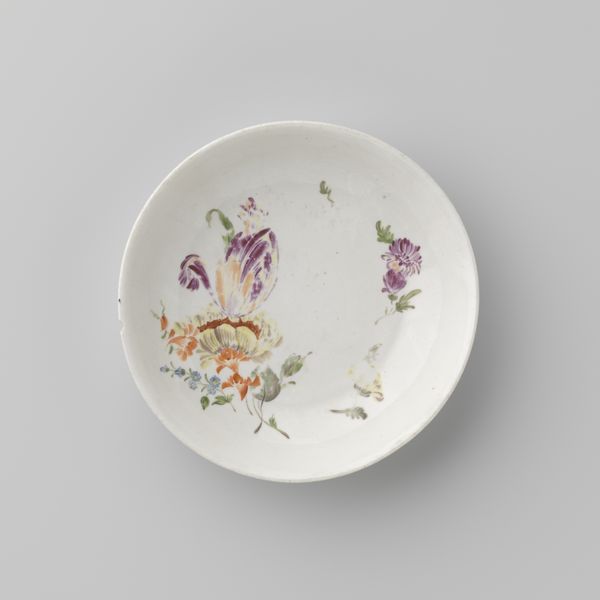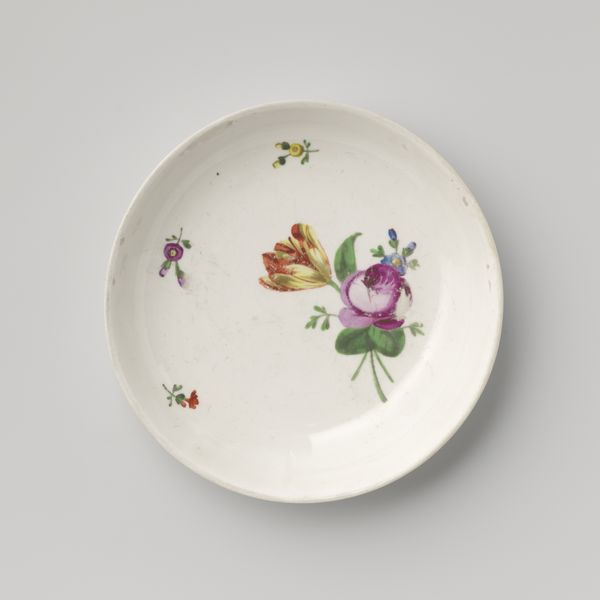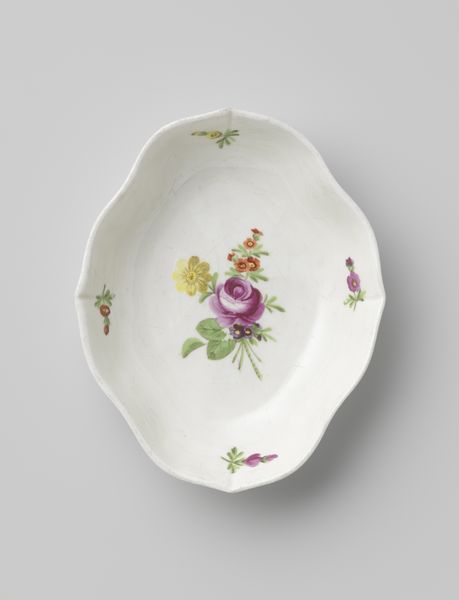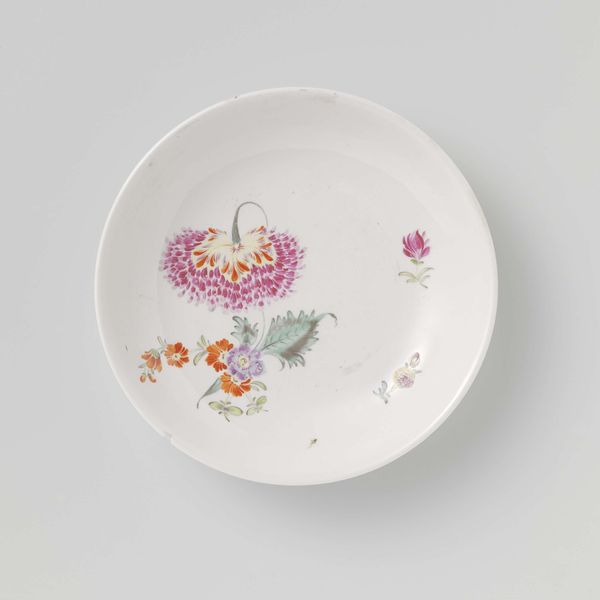
Dimensions: height 3.1 cm, diameter 13.8 cm, diameter 7.3 cm
Copyright: Rijks Museum: Open Domain
Curator: We're looking at a porcelain saucer created by the Kaiserliche Porzellanmanufaktur sometime between 1800 and 1849. It's titled "Saucer with a bouquet and flower sprays". Editor: It has an air of delicate impermanence to it, doesn't it? Like a captured moment from a fleeting summer. Curator: Indeed. The painting style suggests a Rococo influence, even though the style was waning by that period. What's compelling is considering this saucer within its material and historical context. Who made it, under what conditions, and for whom? Editor: The bouquet at its center is meticulously arranged, each bloom seemingly chosen for symbolic meaning. Roses for love, perhaps? Forget-me-nots for remembrance? It speaks volumes about the visual language of flowers. Curator: Absolutely. The delicate porcelain body would have demanded high skill in the making process, and reflects status. Rococo prized asymmetry. Consider this—this level of refined production surely indicates elite consumption. Editor: Precisely! These floral arrangements weren’t mere decoration, they communicated complex sentiments. Each placement was intentional, echoing courtship rituals and societal values through a lexicon of blooms. Curator: Though, let's also appreciate how the very medium – porcelain – elevates a common item into an aesthetic one, shaping perception, not just use. The history and tradition of porcelain in this factory were very advanced. Editor: The porcelain becomes a canvas. Notice how those minor chips along the rim actually speak to history and evoke this sense of past usage? The beauty persists. What could such damage suggest of earlier owners? Curator: Those marks, small cracks—evidence of use and existence. Ultimately, that brings us back to understanding how objects like this were experienced and circulated within specific economic frameworks. It's a trace of previous utility. Editor: Thinking about its future owners, one hopes they understood the coded language they received, and could appreciate that the emotional charge of a seemingly modest piece is actually so rich. Curator: Quite. From studio to table, its path through a material and symbolic world intertwines. Editor: A reminder that beauty and utility aren’t mutually exclusive!
Comments
No comments
Be the first to comment and join the conversation on the ultimate creative platform.
